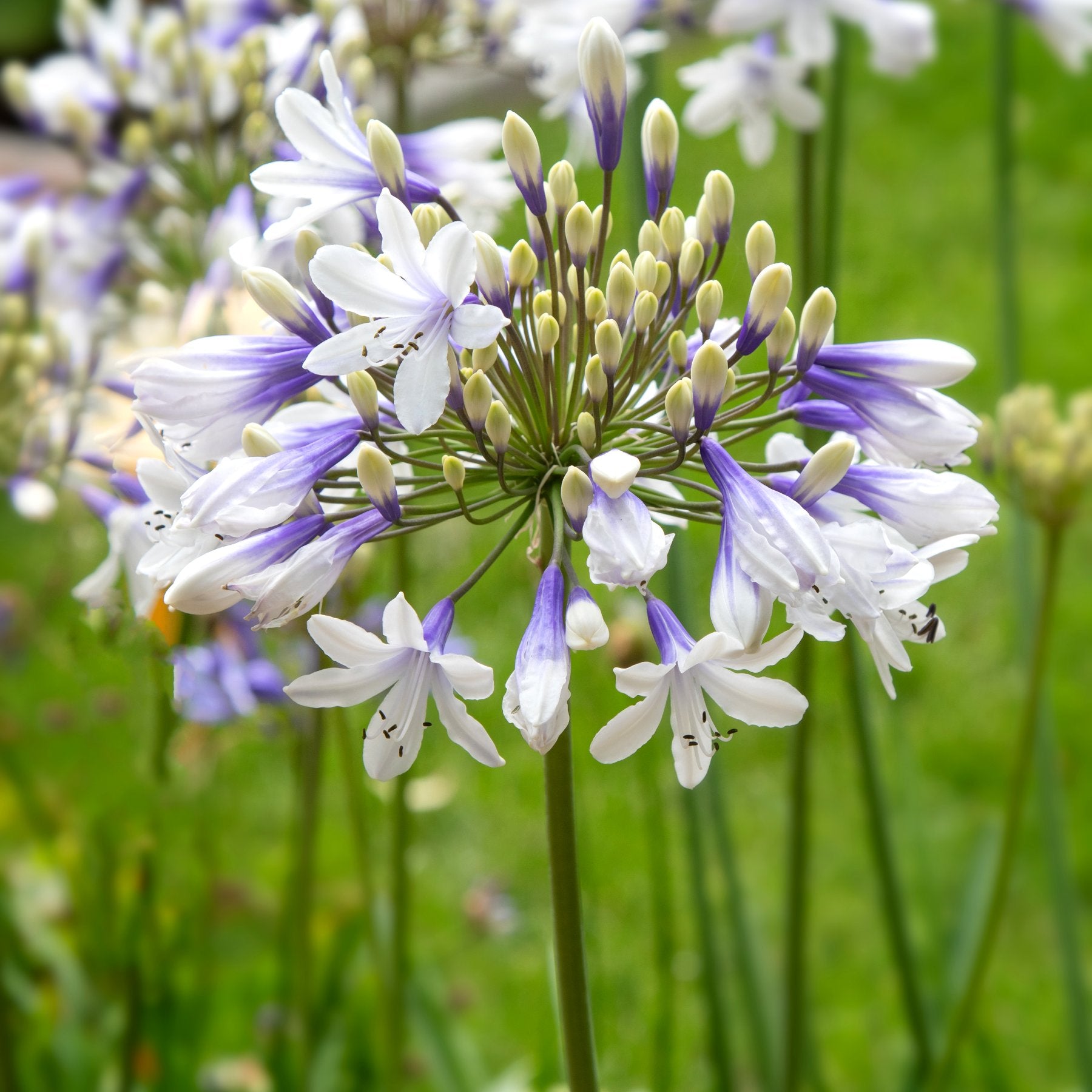Grasping the Art of Agapanthus Care: Vital Steps for Healthy Growth and Lively Flowers
In the realm of cultivation, the farming of agapanthus stands as a gratifying endeavor for those that look for to support these stylish flowering plants. With their striking blooms and elegant vegetation, agapanthus has recorded the interest of gardeners worldwide. Nonetheless, accomplishing optimum growth and lively blossoms needs a nuanced method that incorporates different vital steps. From choosing the right range to understanding trimming strategies, the journey towards growing prospering agapanthus plants is multifaceted and holds the essential to opening the complete possibility of these agricultural treasures.

Selecting the Right Agapanthus Variety

When choosing the ideal Agapanthus selection for your garden, think about aspects such as environment suitability, bloom color, and growth practice. In addition, consider the environment in your region to make sure the Agapanthus range you pick can prosper in your specific conditions. Understanding the growth habit of different Agapanthus ranges is important for proper placement within your yard.
Suitable Growing Problems
Thinking about the optimal ecological needs is vital for successful Agapanthus growing. Agapanthus grows in well-draining soil with a slightly acidic to neutral pH level. When planting, choose a place that obtains full sunlight to partial color. In hotter environments, offering some afternoon color can avoid scorching of the fallen leaves. Agapanthus plants are delicate to cold temperatures and must be shielded from frost during winter season.
To guarantee healthy and balanced growth and lively blossoms, plant Agapanthus light bulbs at a deepness of about 2-4 inches and area them 8-12 inches apart. Mulching around the base of the plants assists keep dampness and reduces weed growth.
Watering and Feeding Tips
Maintaining appropriate dampness degrees and supplying necessary nutrients are essential aspects in the care program for Agapanthus plants. It is essential to strike a balance when it comes to watering Agapanthus. These plants like consistently moist soil yet are susceptible to root rot if overwatered. Throughout the growing season, water deeply when a week, ensuring the dirt is well-draining to stop waterlogging. In hotter environments or during periods of dry spell, more regular watering may be required to maintain the dirt equally damp. Nonetheless, lower watering in the wintertime to stop waterlogged problems.
Feeding Agapanthus is important for promoting healthy growth and prolific flowers. Apply a well balanced plant food, such as a 10-10-10 formula, in the early spring as brand-new growth arises. By following these watering and fertilizing ideas, you can guarantee your Agapanthus plants thrive and produce lively, lasting blooms.
Trimming Methods for Agapanthus
Pruning Agapanthus plants at the suitable times and with correct techniques is crucial for maintaining their health and advertising ideal growth and flowering. The ideal time why not try these out to prune Agapanthus is in late winter or early spring prior to new development arises.
For flowered stems, wait till the blooms have withered and after that cut them back to the base. This not only cleans the plant's appearance yet additionally encourages the growth of new flower buds. Deadheading spent blossoms can also reroute the plant's energy into producing even more flowers rather than setting seeds. Nonetheless, if you wish to accumulate seeds for breeding, leave some blossoms to dry and mature on the plant.
Bear in mind to use tidy, sharp devices to make precise cuts and decrease the danger of introducing conditions. Agapanthus. Routine trimming will help maintain your Agapanthus looking neat and healthy and balanced while guaranteeing a plentiful display screen of lovely blossoms
Managing Typical Parasites and Conditions
After ensuring proper pruning strategies for Agapanthus, it is vital to address common bugs and diseases that can affect the wellness and vigor of these plants. Agapanthus plants are typically hardy but can still succumb to certain issues. One typical insect that influences Agapanthus is the Agapanthus gall midge. This tiny, orange fly lays its eggs in the vegetation, resulting in altered development and flower buds that stop working to open. To combat this parasite, prune and damage any afflicted plant parts and think about using insecticidal soap.
An additional typical problem is fungal fallen leave spot, which presents as dark sores on the fallen leaves. To prevent fungal illness, ensure good air flow around the plants, avoid above watering, and eliminate any contaminated leaves promptly. Furthermore, Agapanthus plants can experience root rot if they are grown in poorly try this website draining pipes dirt. To stop this, plant Agapanthus in well-draining dirt and prevent overwatering. By being attentive and taking punctual action against illness and insects, you can help your Agapanthus plants thrive and generate lively blossoms.

Final Thought
In conclusion, grasping the art of agapanthus care entails selecting the appropriate variety, providing ideal planting problems, proper watering and fertilizing, proper trimming strategies, and attending to usual bugs and diseases. By adhering to these crucial actions, you can ensure healthy and balanced growth and vivid blooms why not try this out for your agapanthus plants. Remember to routinely keep track of and keep your plants to advertise their general well-being and long life.
To make certain healthy growth and vibrant flowers, plant Agapanthus bulbs at a depth of regarding 2-4 inches and space them 8-12 inches apart. By complying with these watering and feeding pointers, you can guarantee your Agapanthus plants prosper and produce vibrant, durable blooms.
One common parasite that impacts Agapanthus is the Agapanthus gall midge. Additionally, Agapanthus plants can endure from root rot if they are grown in improperly draining pipes soil. By following these essential actions, you can guarantee healthy and balanced growth and vibrant flowers for your agapanthus plants.